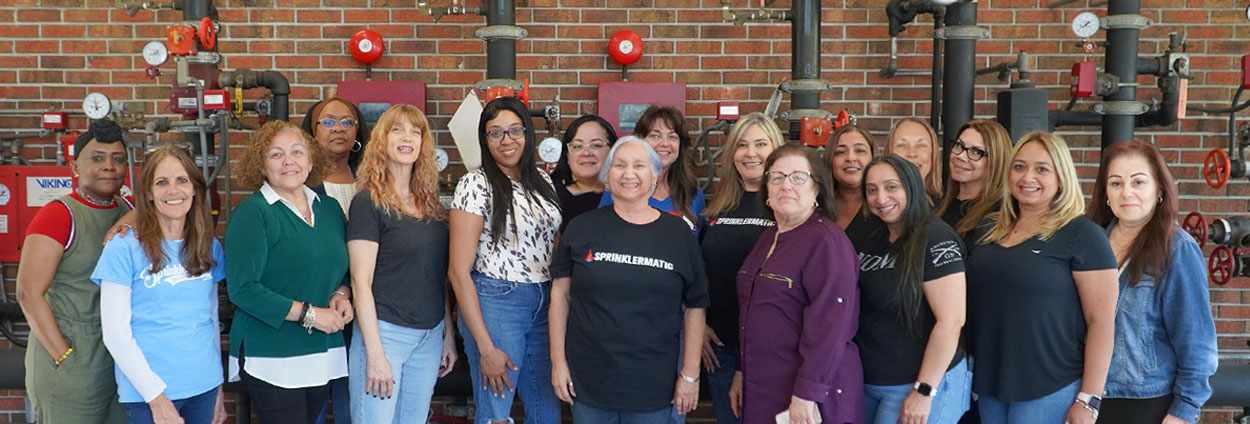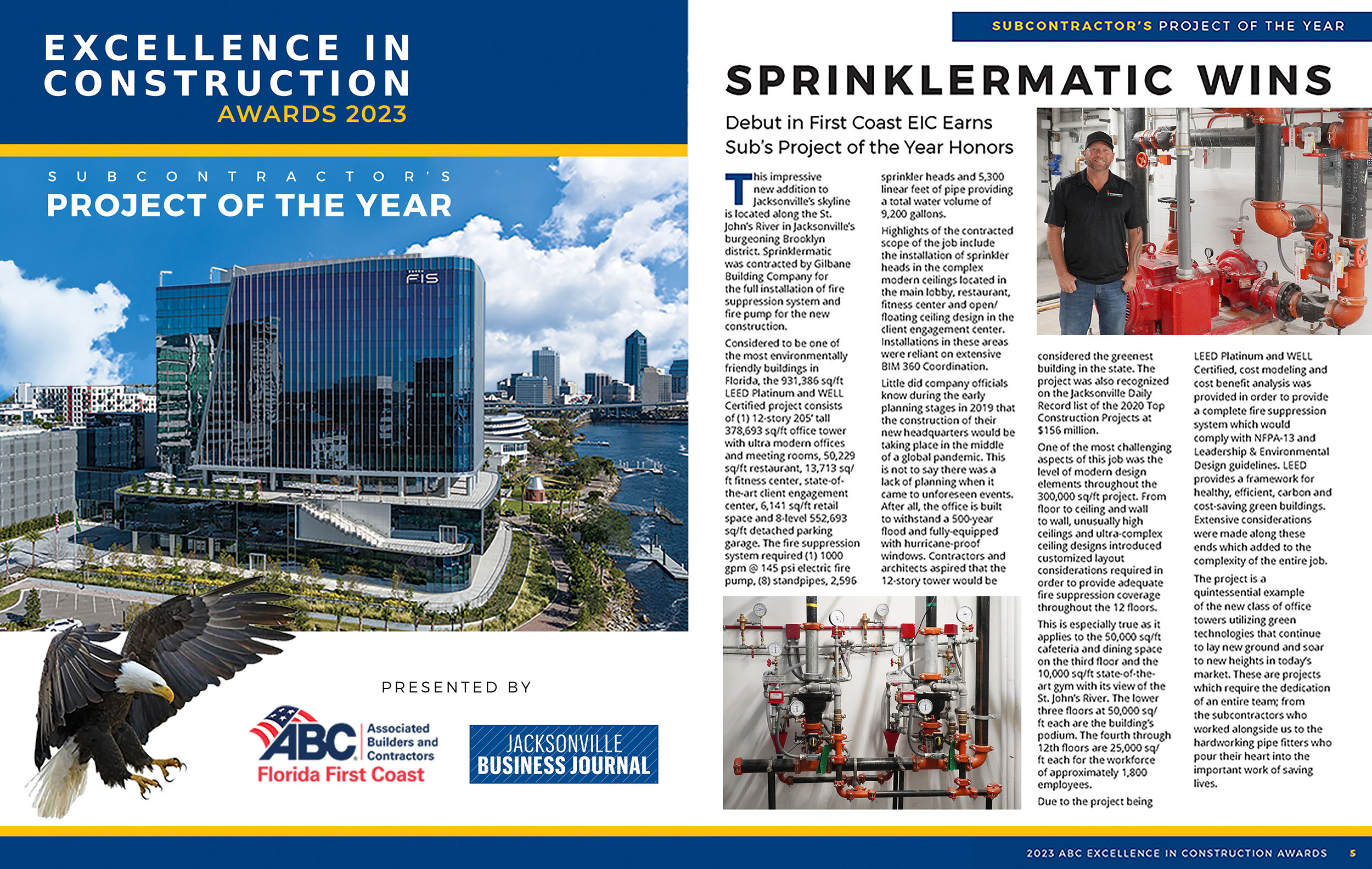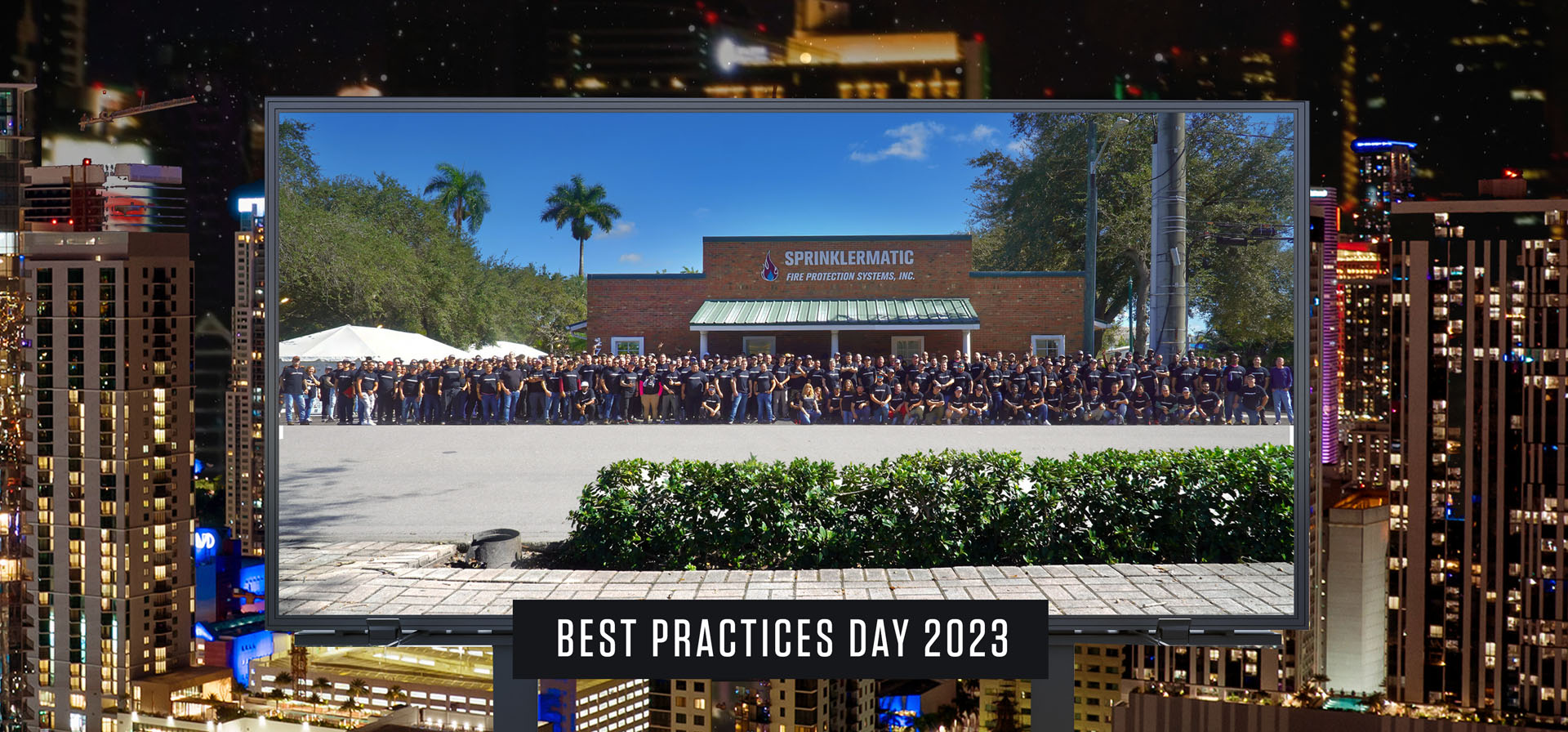Florida High Rise Condo Concerns: A Fire Officer's Prospective
By Captain Bill Gustin, Lead Instructor Miami-Dade Fire Department Training & Safety Division and Guest Instructor at Sprinklermatic University: bill@gustinfiretraining.com
Fire Departments in the State of Florida must wake up to the reality that there are hundreds of high-rise condominiums in this state that have only partial or no sprinkler protection. Whereas older high-rise apartments, hotels and office buildings were required to be retrofitted with sprinkler systems, lobbyists for condominium associations have been successful in persuading the State legislature to grant and extend a grace period for installing sprinklers.
Citing the tragic Grenfell Tower high rise fire in London, the Governor of Florida vetoed a bill in the legislature that would have further extended the grace period for installing sprinklers in existing condominiums but this has now been extended to 2024. To avoid an unreasonable financial burden on condominium owners, the State arrived at a compromise allowing condominium owners to opt for an “Engineered Life Safety System” (ELSS) instead of installing a full NFPA-13 compliant sprinkler system. An ELSS is based on an engineering analysis of an existing building with implementation of additional fire protection measures including any or all of the following: partial sprinkler protection; smoke detection; smoke control systems; compartmentation and other improvements. The analysis takes into account factors such as the risk to occupants; their health, age and mobility, distance to exits and fire resistance of compartmentation.
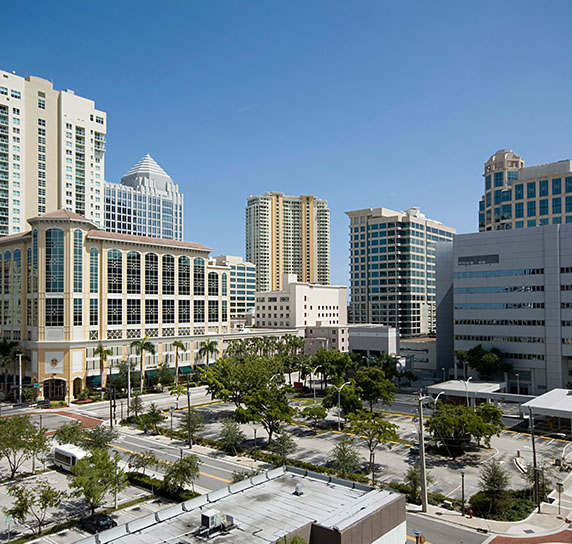
An ELSS must be approved by AHJs; which in most jurisdictions would be the local Fire Marshals. Although there is significant controversy and ambiguity surrounding ELSSs, this, in my view, is how it will impact fire officers: the most we should expect in existing high rise condominiums will be the installation of partial sprinkler systems, with sprinklers in public areas and no more than one sidewall sprinkler head inside the door of living units.
It is very important to understand that many existing condominiums were constructed in the early 1970’s; consequently, they have a very limited water supply dedicated to fire suppression. Whereas today, flow tests are required to ensure adequate water supply for fire suppression systems, older buildings may be supplied by small diameter and, often, dead-end water mains. Additionally, since many of these existing condominiums were constructed before 1993, they are only required by NFPA-14 to have a minimum standpipe hose outlet residual pressure of 65 PSI at a flow of 500 GPM. Although, theoretically, outlet pressure will be higher at flows less than 500 GPM, consider the age and condition of the fire pump and piping of standpipe systems in these old buildings.
A Dangerous Synergy: 2 + 2 = 6
Synergy is defined as the interaction or cooperation of two or more factors or substances, to produce a combined effect greater than the sum of their separate effects. An old saying, “The whole is greater than the sum of its parts”, expresses the basic meaning of synergy. In terms of high-rise condominium fire safety, there are many factors which, individually or combined, should be considered as having the possibility of endangering High-Rise occupants and firefighters.
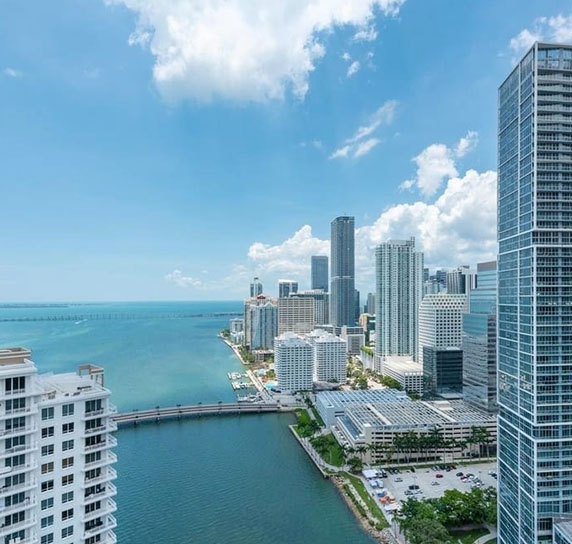
Factors Which Endanger High-Rise Occupants & Firefighters
- Lack of sprinkler protection
- Lack of self-closers on unit’s doors
- Lack of smoke barrier doors isolating elevator lobbies
- Inadequate water supplies
- Large, luxury condominium units conducive to a volume of fire challenging or exceeding the suppression capability of fire department hose lines
- Waterfront buildings, which restrict the placement of fire department aerial ladder apparatus.
- A strong sea breeze creating conditions for a wind-driven fire that blow torches out of the fire units’ door, into the public hallway and into the faces of firefighters advancing a hose line from a stairwell.
- Elderly occupants; many with pre-existing medical conditions and confined to wheelchairs or dependent on walkers for mobility.
- Occupants, that panic and will not heed the fire department’s instructions to remain in their units. As a consequence, occupants will leave the refuge of their smoke-free unit and venture into a smoke-filled hallway where they will succumb to smoke in elevator lobbies where they were frantically pressing buttons for an elevator that is not coming because all the elevators have been recalled.
- Patio furniture on balconies made primarily with synthetic petrochemical-based materials; plastics that burn like solidified gasoline and are transformed into a running, flaming goo that can drip down and start fire on balconies below.
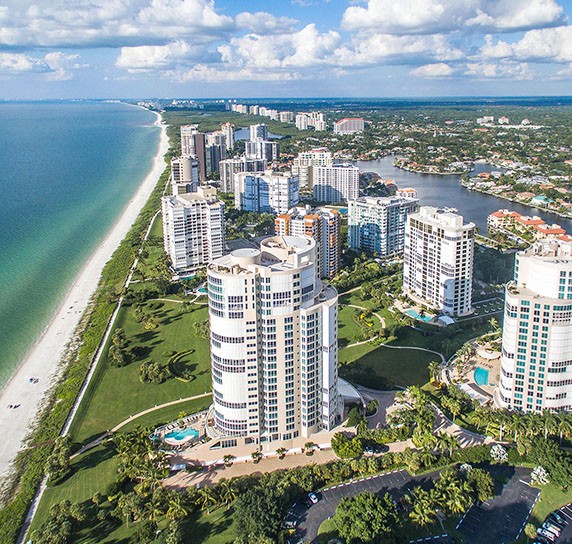
Consider This…
High-rise buildings have garnered significant attention in the fire safety world over the years. The multiple floors of a high-rise building create the cumulative effect of requiring great numbers of persons to travel great vertical distances on stairs in order to evacuate the building. The public, code bodies, local, regional and federal governments, as well as the design, build, and ownership communities are all affected by high-rise building safety.
Advice For Fire Departments
- When a fire of any significance occurs in a high-rise building, assume that it reached that extent because it does not have sprinkler protection and probably has limited water supply for stand pipes and hydrants near the building.
- Understand the potential for a fire in a non-sprinklered high rise building to grow beyond the suppression capability of 1¾ inch hose lines.
- Understand the potential for a fire in a non-sprinklered high rise building to auto extend to floors above. Command and division supervisors must pro-actively assign companies to check for vertical extension; starting with the occupancy directly above the fire.
- Understand that the standpipe system may not have sufficient pressure; 105 PSI, to supply a 1¾ inch hose line flowing 185 GPM. For example, consider 1000 sq. ft. condominium unit: Using the National Fire Academy’s fire flow formula of square foot of fire area divided by 3 would equal a required flow of over 330 GPM to safely and rapidly suppress this fire.
- Consider if the condominium unit was fully involved and exceeds the National Fire Academy’s fire flow formula, realize the potential that fire that could overwhelm and seriously burn firefighters that initiated a direct hose line attack on the fire from the public hallway. Accordingly, the use of 2½ inch hose may be necessary for that volume of fire due to its increase in flow and low friction loss as compared to 1¾ inch hose. Additionally, 2½ inch hose may, depending on the standpipe outlet residual pressure, be capable of supplying a portable master stream device.
- In warm climates and in the summer, months understand the potential for reverse stack effect to contaminate stairwells at levels below the fire floor. When the temperature outside a building is higher than the temperature inside a building, the warm air has a tendency to flow into the building on upper floors, lose buoyancy as it cools and sink to lower floors.
- Smoke on lower floors will force firefighters to climb stairs “on-air” and exhaust their SCBA air supply before they can attack the fire. Smoke in the stairwells below the fire may be the first indication to request a second or greater alarm. Chocking open lobby and ground floor exterior stairwell doors creates a flow path for the downward spread of smoke. Consider keeping doors that will lock upon closing ajar but essentially closed to stop the passage of smoke.
- Understand that as smoke cools and loses its buoyancy carbon monoxide can contaminate lower floors. No secondary search is complete without monitoring all floors for CO.
- Static pressure at a standpipe hose outlet is meaningless to firefighters. It is CRITICAL for crews to fully flow their hose line to read the RESIDUAL pressure on their in-line gauge and judge the quality of their stream on the floor below the fire before ascending to the fire floor.
- Consider a transitional attack; direct a straight or solid steam from ground or elevated master streams at a steep angle through the bottom of a window or sliding glass doorway that deflects off the ceiling of the fire apartment.
- Consider attacking the fire indirectly by keeping the door to the fire occupancy closed and directing a stream from the balcony of an adjacent unit or through a hole opened in the wall of an adjoining unit.
- Ascertain the residual (intake) pump pressure of the fire apparatus connected to a fire hydrant supplying the fire department connection. A significant drop from static pressure to residual pressure is a strong indication that the water main supplying the the fire suppression system and hydrants in the area are supplied by small diameter water mains that may be fed from only one direction (dead end).
- When an inadequate water supply is confirmed or suspected, consider pairing engine companies to establish supply lines from distant hydrants on larger water mains.
- When an inadequate water supply is confirmed, or suspected fire companies should consult with their Fire Prevention Bureau Water Supply Engineering to determine main sizes and request flow tests.
- Fire companies must pre-fire plan all mid- and high-rise buildings in their response district to determine their level of sprinkler protection.
Connecting the Disconnect
Most fire officers who will be literally “on the (hose) line” at a high-rise fire have never spent any time in their department’s fire prevention bureau. Consequently, they are not familiar with codes and standards, such as NFPA-13 and 14 and do not understand the purpose of function of standpipe pressure-reducing valves. The lives firefighters who actually fight a high-rise fire may well depend on the reliability of the standpipe system that supplies their hose lines.
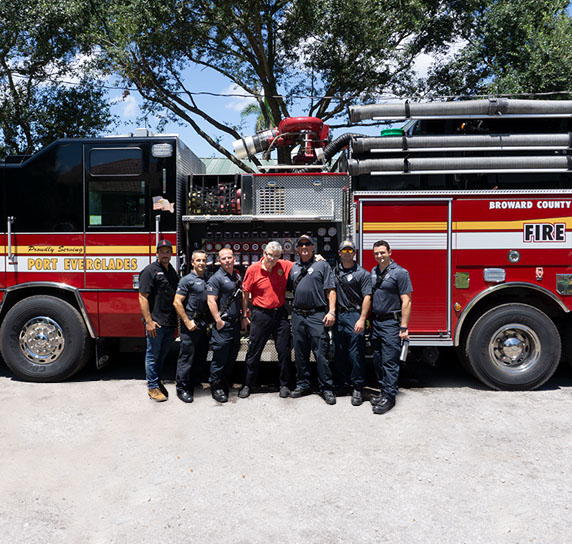
Are Fire Officers aware of the last time it was flow and pressure tested in accordance with NFPA standard 25; Testing and Maintenance of Water-Based Fire Suppression Systems? Additionally, I have never conversed with a fire suppression system contractor who wasn’t willing to answer my questions. Line firefighters who respond to fires must realize that they, alone, cannot protect the occupants of high rise buildings from fire; they must reach out to their Fire Prevention personnel who have a good working knowledge of codes and fire protection systems. Additionally, public education is critical. Although they will never completely prevent panicky residents from leaving the refuge of their tenable units, fire departments, through public education, should make their best effort to educate occupants of residential high rise buildings that they are better off remaining in their units, rather than venturing into smoke-filled hallways and stairwells.
Captain Bill Gustin is a 47-Year Fire Service Veteran and Lead Instructor for the Miami-Dade Fire Department Training & Safety Division. Gustin currently serves on the editorial board and is a technical advisor for Fire Engineering Magazine. He began his fire service career in the Chicago area and teaches fire training programs in Florida and other states. Visit www.gustinfiretraining.com or email bill@gustinfiretraining.com for more information.


